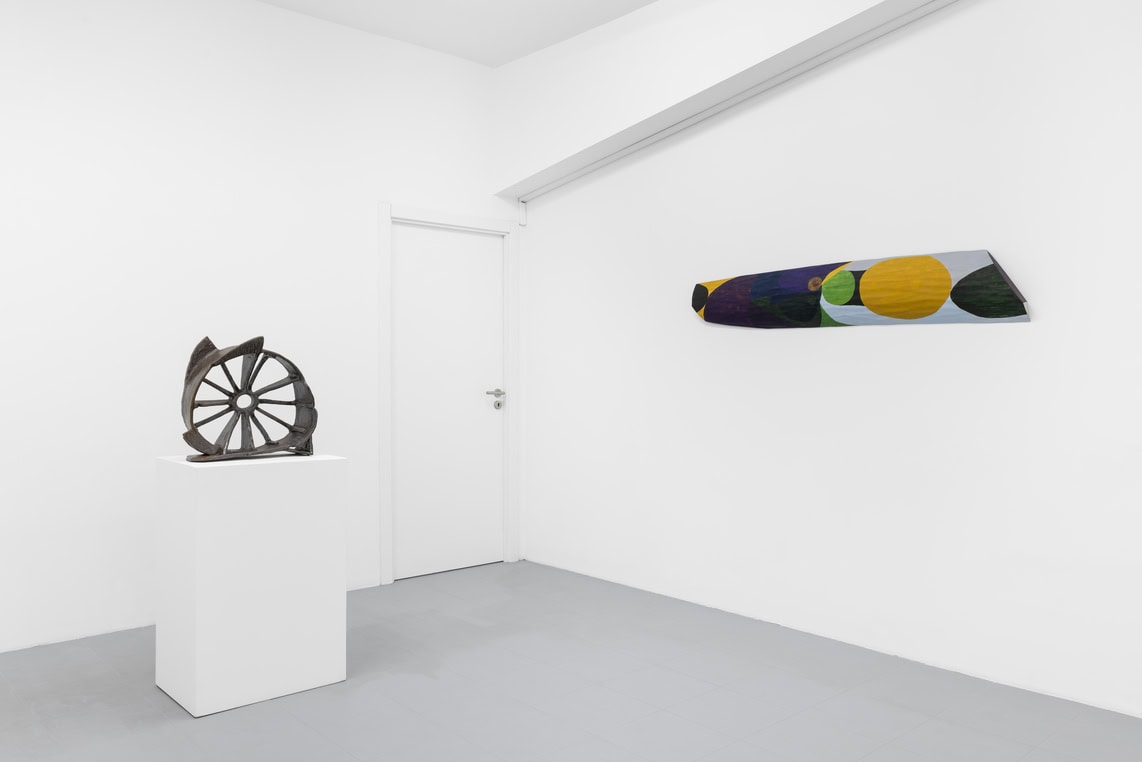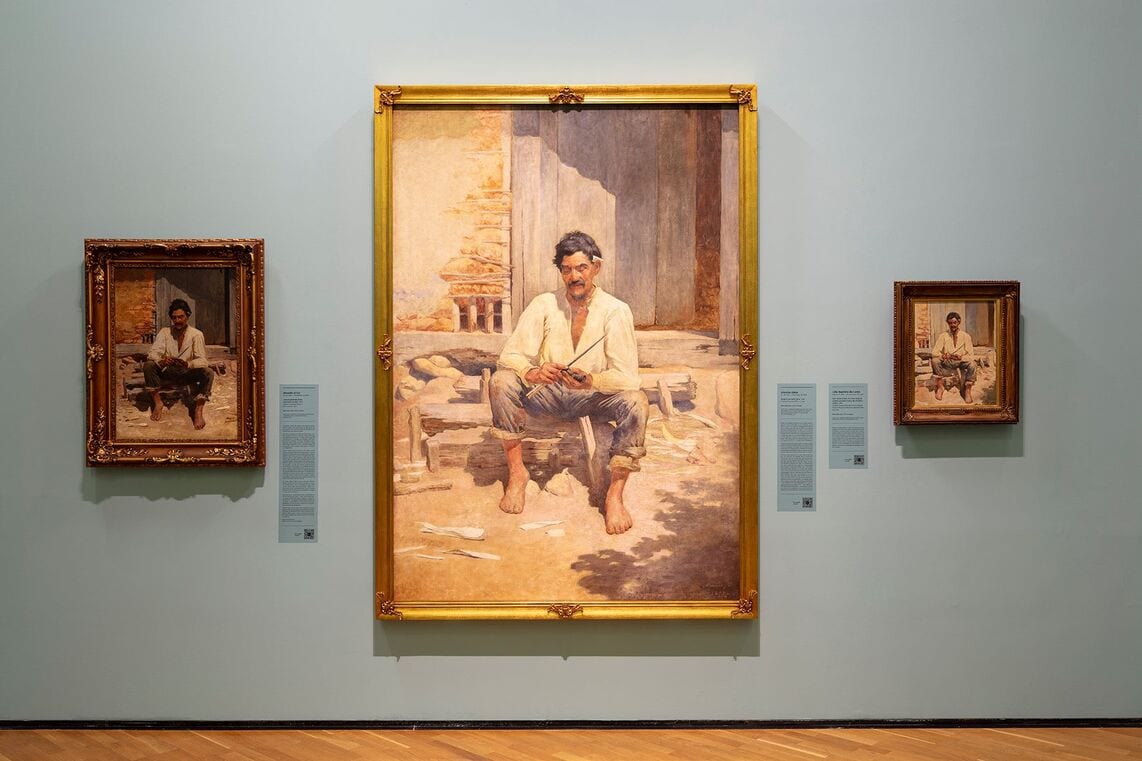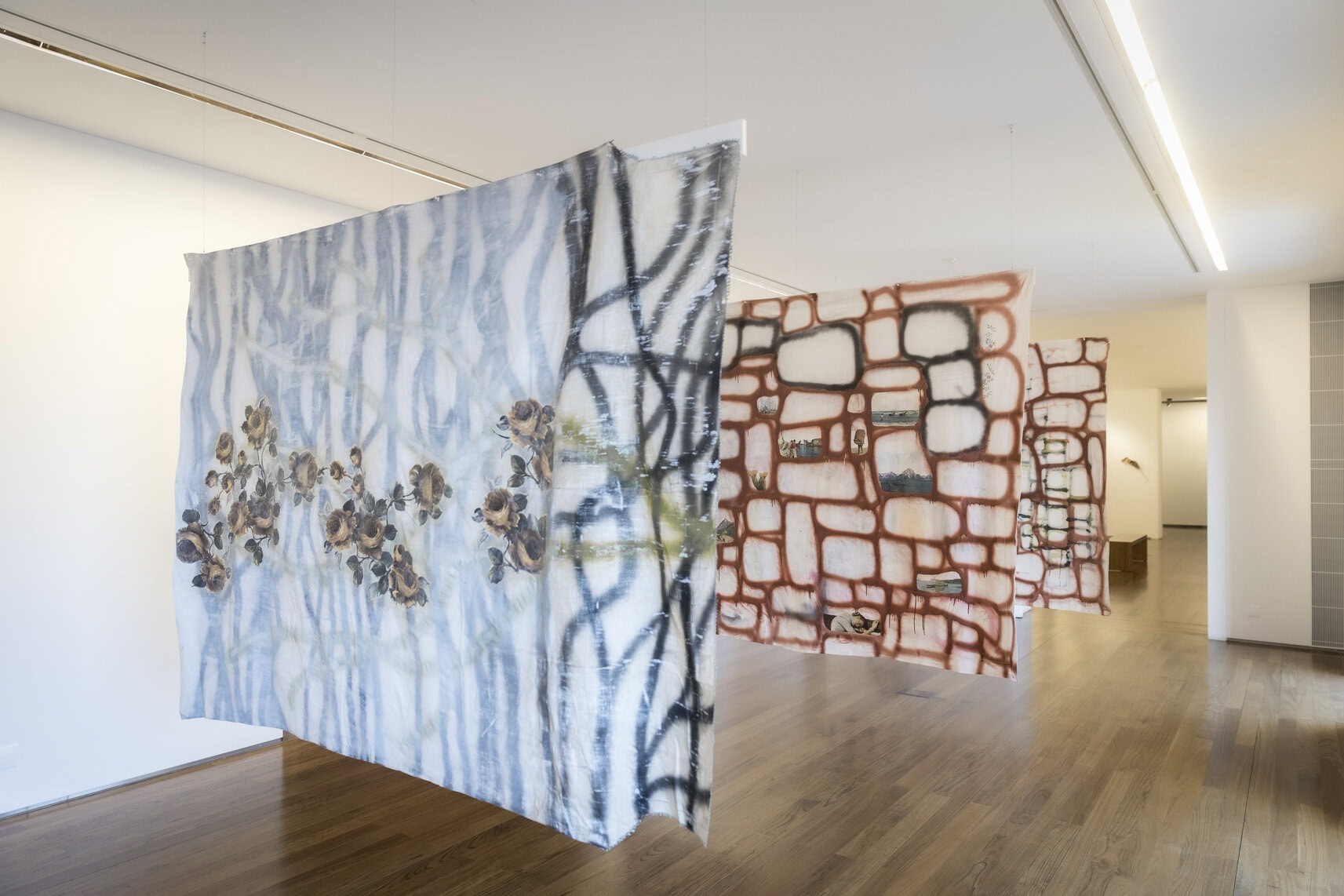In conversation with Hans Ulrich Obrist about the importance of archives (Future of Archives, a series of dialogues promoted by the Norman Foster Foundation), Beatriz Colomina remarked: “Archives are spaces for new ways of seeing and new ways of thinking.”[1] This seminal idea seems to bind together the four exhibitions currently on show at the Fundação Eugénio de Almeida in Évora. Turning to the Portuguese dictionary for the definition of arquivo (archive), we find: (1) a place or building where documents are kept; (2) a set of documents preserved and generally organised; (3) registry office, notary’s; (4) a piece of furniture, usually with drawers or compartments, designed to store or file documents (filing cabinet); (5) a person with an excellent memory. Let us see how this manifests itself in each of the four exhibitions. On the ground floor are Corpo-Ilha, by Jacira da Conceição, and Believe, by David Infante. On the middle level, Ana Vidigal presents Histórias de Família, and, on the top floor, Spanish artist Eugenio Ampudia shows Abrigo de Combatentes.
Biographic archive:
Corpo-Ilha by Jacira da Conceição, curated by Teresa Veiga Furtado, is a self-portrait in which the artist claims, building and refounding, her own narrative within the history of the African diaspora and within the stories that only the living oral archive of collective memory can tell. Three movements, or three performance videos, give the exhibition its title (Corpo-Ilha – Três Movimentos, 2025). In them, as in the rest of the show, which ranges from ceramics to photography, the artist explores her island heritage: the memory of Cape Verdean women, testimonies of migration, female resistance and equality. The series Silhuetas (2024) stands out amid gestures in clay (Guardiãs, 2022, and Sobreviventes, 2024) and other movements in sync with the sea (“water” – to which Gaston Bachelard devoted a book on dream and the unconscious). The composition of fifteen Polaroid photographs, high-contrast images that blend female outlines with texts, challenges the dominant narrative of perceiving and categorising people by colour. One affirmative line reads: “the Black woman artist asserts herself in this world, knowing that her skin colour arrives before she does!!!” In our contrasting borders and contours, like islands and islets, we are only silhouettes and profiles without colour. Jacira da Conceição is ready to revisit the archive of history with the same importance she grants the archive of oral stories.
Monographic archive:
Believe by David Infante, curated by Diogo Ramalho[2], is likewise a quest for identity, whether in conscious, reflective self-representation or in a subconscious, dream-like, fictional guise. It is hard – perhaps because of the recent loss of David Lynch – not to be struck on entering the gallery by the clash between the red of the back wall and the chiaroscuro, even blackness, of the bizarre 1 × 1 analogue abstractions. It is a format banalised by the frenetic sharing of content on social networks, yet Infante comfortably rescues it for the walls of the Eugénio de Almeida Foundation. Most photographs are monochrome, and the themes oscillate between surreal imagery and memory. The photographer documents parallel worlds where belief, strangeness and a certain popular religiosity exist—one might say still exist, although on this side of the screen they verge on extinction. David Infante’s narrative or narratives have an indeterminate time, located somewhere in past tenses, and are situated geographically between fiction and reality; they make us suspicious, then eager to believe we are looking at family albums. That, too, is the proposition: to believe, to want to believe, belief itself. Believe is also a photographic publication in the digital age, thus an anthological archive of fifteen years’ work.
Dead (or familiar) archive:
On the first floor Ana Vidigal presents Histórias de Família, curated by Patrícia Reis. The artist proposes an intimate exercise of unveiling to reveal or rummage. Simultaneously, it is a lucid exposition of the commonplace role that individuality plays in Portuguese collective history, and in that sense, it can be viewed as a political act. Moving through successive rooms, the artist traverses more than four decades of work, evoking childhood memories with echoes of a colonial and post-colonial past: children’s abridgements of the popular tale Bambi on Polaroids mingle with family and domestic objects, furniture, files and filing cabinets, drawers and chests, belongings, letters, magazines, cuttings and clippings, printed bibs, transfers and transparencies on sheets, a reed, objects washed up by the sea or fished from the sand… Everything becomes material for collage, a pretext for reuse or emotional reconciliation with the past. Ana Vidigal shows how vital it is to revisit the archive once, again and many times; not necessarily the institutional holdings but the bedside-table drawer where individual narratives reside, which we recognise as our own, “from back home”. Revisiting the archive places history in perspective, making other stories possible.
Alive (or botanical) archive:
Climbing to the top floor of the Foundation, we reach the last of the four categories we have devised for the archive. Abrigo de Combatentes by Eugenio Ampudia, curated by André de Quiroga, results from a partnership between the FEA and Mostra España (the Spanish art and culture biennial). The piece that lends its name to the exhibition greets the visitor. Abrigo de combatentes (2014) is written on three folding wooden rules (metres). Three broken lines deconstruct the meaning of the phrase. The object is part of a series entitled Tomar medidas, which questions the power of the word – of discourse and of the sender/receiver dyad – in shaping narratives. Entering axially into the show, in one of the three main rooms that structure the curation, we see a kinetic sculpture made of branches and leaves (replicas cast in bronze). Alexander Calder and his mobiles come to mind in a nature/culture dichotomy. Somos Aquello que Dejamos de Ser (2023) plays a central role and provides the thread Ampudia unspools through the remaining rooms. First comes a series of drawings (Los Nuevos Salvajes, 2023) composed of natural elements such as branches, leaves, pine needles, mosses and words. Then follows a sequence of sound videos in dialogue with large-format photographs. On the left, a photograph of the concert at Barcelona’s Liceu Theatre (Concierto para el Bioceno, 2020), where the audience consisted of 2 292 invited plants—stands beside a video of another concert for plants, this time in Lisbon’s Estufa Fria (Concierto para Plantas, 2023). In this diptych, let us call it so, Ampudia invokes the human desire to understand, connect with and live alongside other species, in inter-species cooperation. The same coexistence, tinged with irony and even humour, sees classical music and a sleeping bag share institutional space, be it library or museum. The series Dónde Dormir 4 (Biblioteca Nacional do Palácio da Ajuda, 2014) and Dónde Dormir 1 (Museu Goya, 2008) are clear examples of Ampudia’s interest in challenging the dialogue between culture and nature, and, if we see it that way, between the dead archive and the living archive, the archive and the counter-archive.
We conclude our visit by descending to the jasmine-scented courtyards awakening below, seeking shade in the Casas Pintadas, and thinking that this, too, would be a fine spot for a short siesta under the watchful eye of a mural archive of profane paintings.
At Fundação Eugénio de Almeida, Corpo-Ilha is on show until 18 May; Believe, until 19 October; Histórias de Família, until 11 May; and Abrigo de Combatentes, until 15 June.
[1] “Archives are opportunities for new ways of seeing and thinking.”
[2] Director of Plato, a decentralised project centred on emerging artists with headquarters in Évora and Porto.


